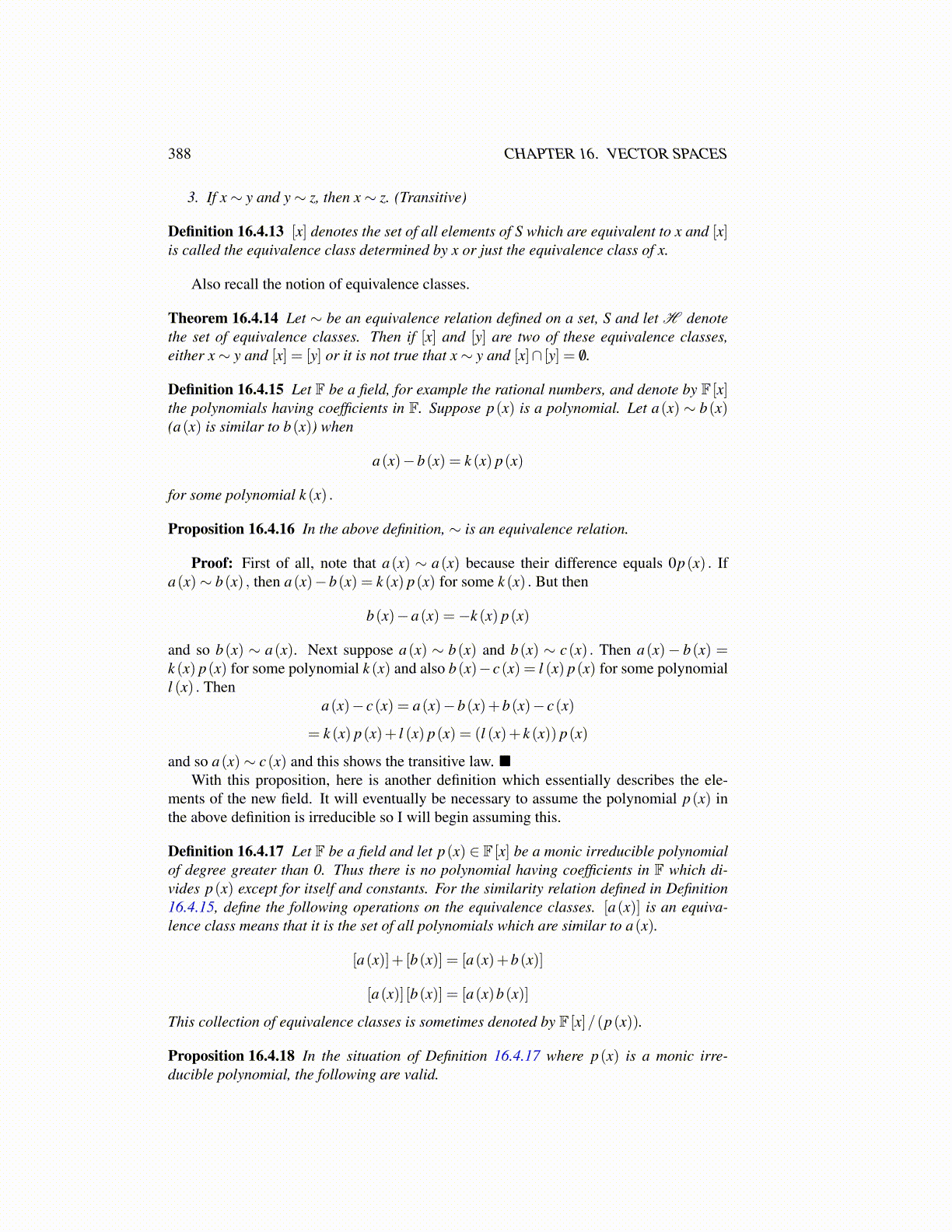
388 CHAPTER 16. VECTOR SPACES
3. If x∼ y and y∼ z, then x∼ z. (Transitive)
Definition 16.4.13 [x] denotes the set of all elements of S which are equivalent to x and [x]is called the equivalence class determined by x or just the equivalence class of x.
Also recall the notion of equivalence classes.
Theorem 16.4.14 Let ∼ be an equivalence relation defined on a set, S and let H denotethe set of equivalence classes. Then if [x] and [y] are two of these equivalence classes,either x∼ y and [x] = [y] or it is not true that x∼ y and [x]∩ [y] = /0.
Definition 16.4.15 Let F be a field, for example the rational numbers, and denote by F [x]the polynomials having coefficients in F. Suppose p(x) is a polynomial. Let a(x) ∼ b(x)(a(x) is similar to b(x)) when
a(x)−b(x) = k (x) p(x)
for some polynomial k (x) .
Proposition 16.4.16 In the above definition, ∼ is an equivalence relation.
Proof: First of all, note that a(x) ∼ a(x) because their difference equals 0p(x) . Ifa(x)∼ b(x) , then a(x)−b(x) = k (x) p(x) for some k (x) . But then
b(x)−a(x) =−k (x) p(x)
and so b(x) ∼ a(x). Next suppose a(x) ∼ b(x) and b(x) ∼ c(x) . Then a(x)− b(x) =k (x) p(x) for some polynomial k (x) and also b(x)−c(x) = l (x) p(x) for some polynomiall (x) . Then
a(x)− c(x) = a(x)−b(x)+b(x)− c(x)
= k (x) p(x)+ l (x) p(x) = (l (x)+ k (x)) p(x)
and so a(x)∼ c(x) and this shows the transitive law. ■With this proposition, here is another definition which essentially describes the ele-
ments of the new field. It will eventually be necessary to assume the polynomial p(x) inthe above definition is irreducible so I will begin assuming this.
Definition 16.4.17 Let F be a field and let p(x) ∈ F [x] be a monic irreducible polynomialof degree greater than 0. Thus there is no polynomial having coefficients in F which di-vides p(x) except for itself and constants. For the similarity relation defined in Definition16.4.15, define the following operations on the equivalence classes. [a(x)] is an equiva-lence class means that it is the set of all polynomials which are similar to a(x).
[a(x)]+ [b(x)] = [a(x)+b(x)]
[a(x)] [b(x)] = [a(x)b(x)]
This collection of equivalence classes is sometimes denoted by F [x]/(p(x)).
Proposition 16.4.18 In the situation of Definition 16.4.17 where p(x) is a monic irre-ducible polynomial, the following are valid.